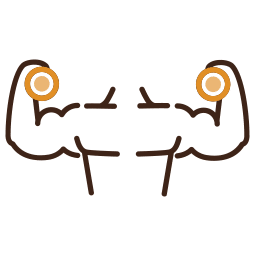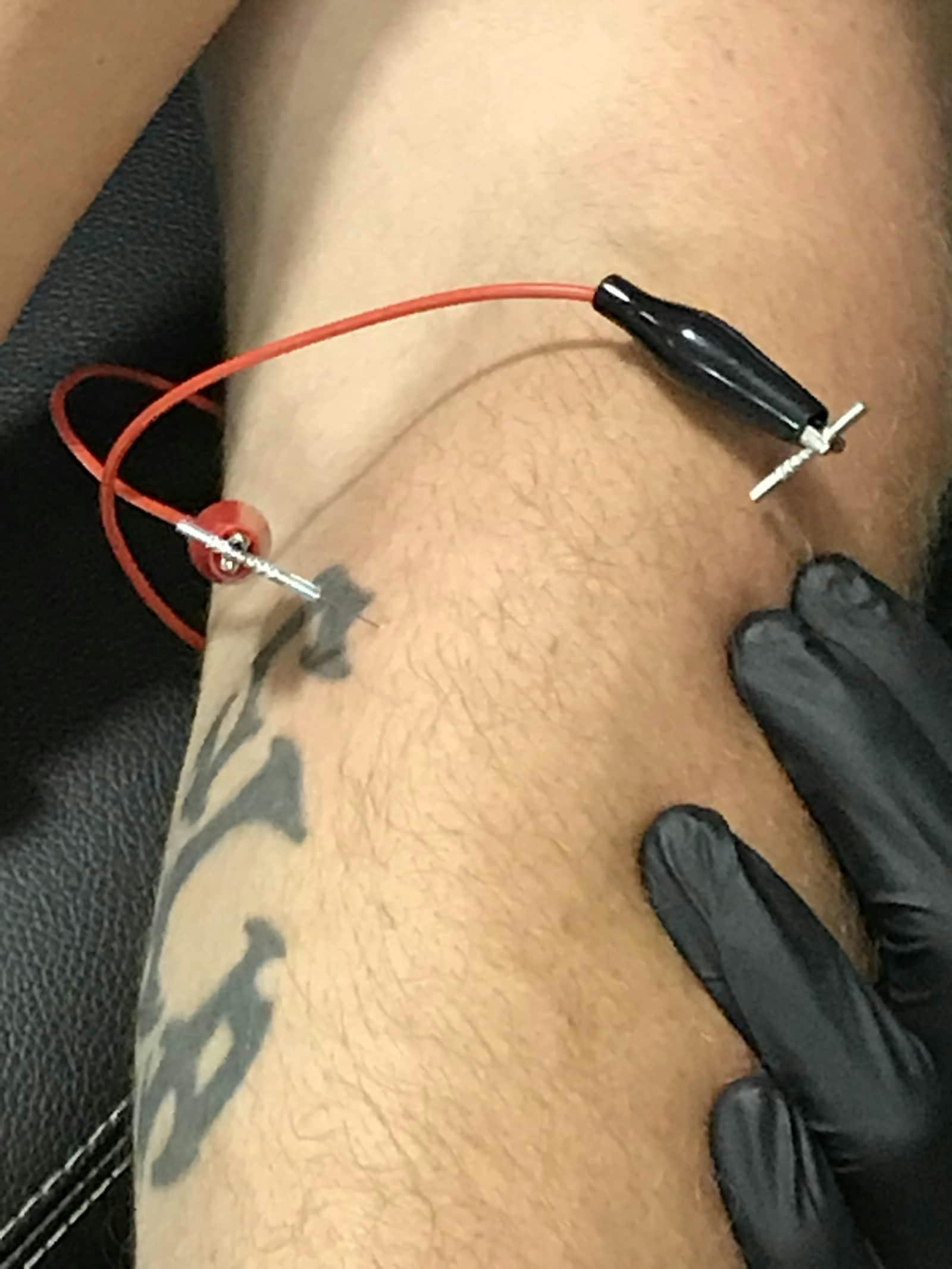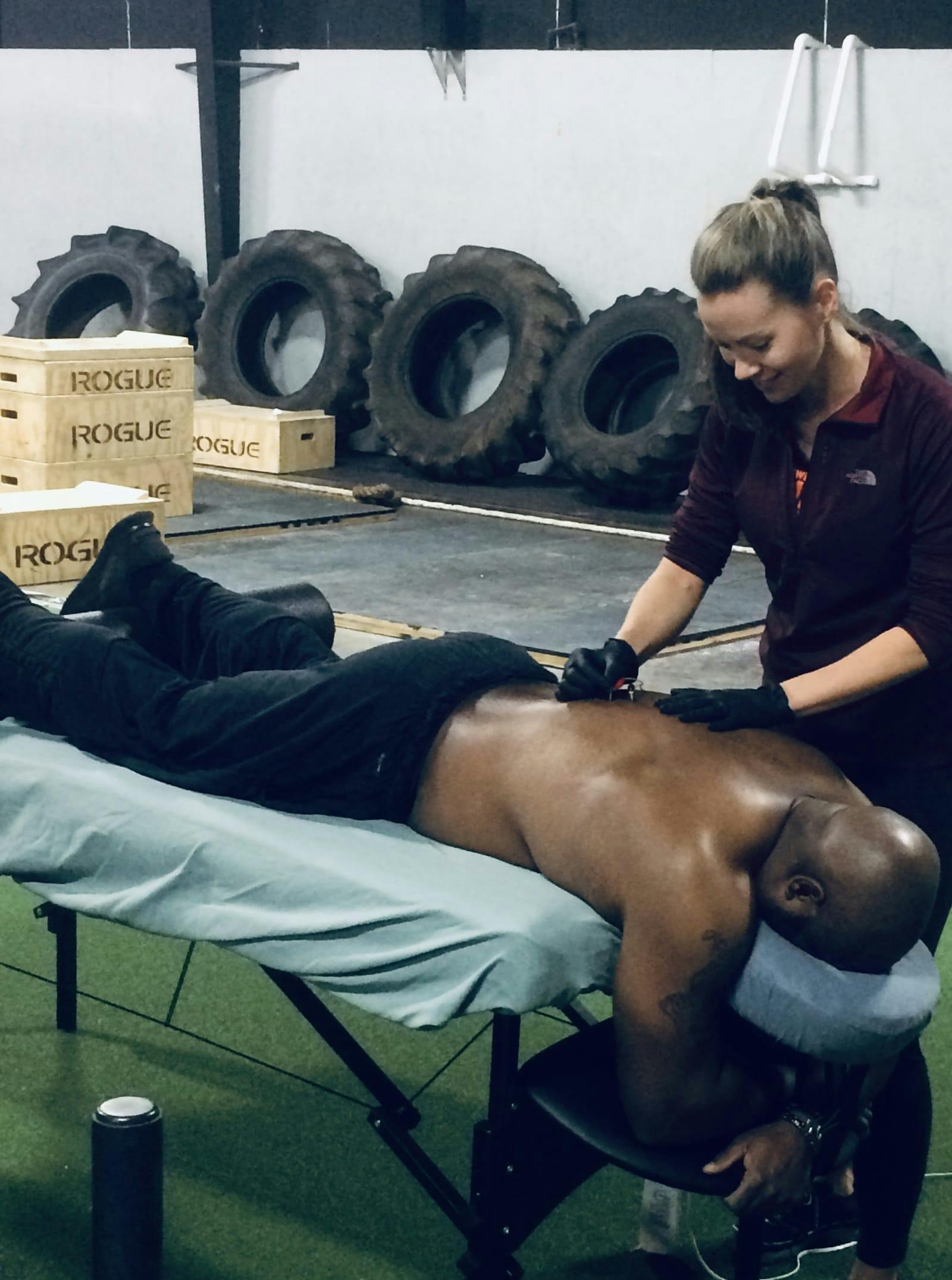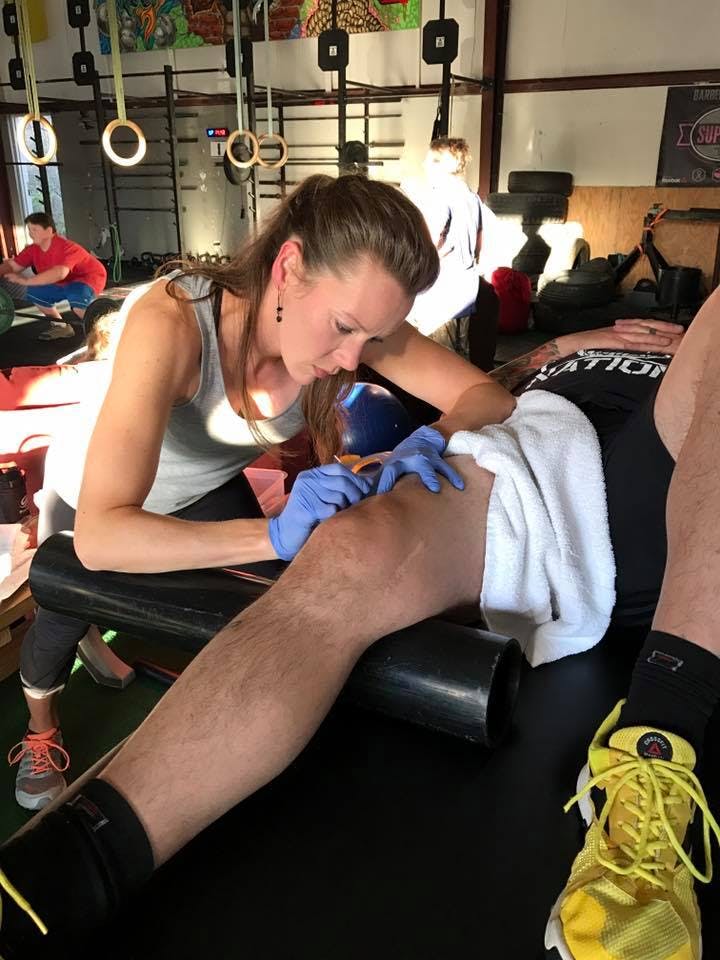Get Back to Doing the Things You Love

Release
Super-thin filaments are inserted to release painful knots in your muscles.

Reset
Adding stim to the super thin filament needles resets the muscles allowing them to function properly.

Retrain
Once released and reset, your muscles learn to work better, so you don't keep having the same pain.
Eliminate Pain and Muscle Tightness
Functional Dry Needling is a skilled intervention performed by a physical therapist that uses a thin filament needle to penetrate the skin and stimulate underlying myofascial trigger points, muscular and connective tissues for the management of neuromuscular pain and movement impairments. (APTA, 2012)
Is it the same as acupuncture?
No. Dry Needling is based on modern Western medicine to treat specific neuromuscular problems causing pain or hindering mobility. The needles are inserted into the muscle, gently manipulated, and then removed after a short period, a process that may be repeated several times. On the other hand, acupuncture seeks to address the flow of energy around the body and vital organs by inserting needles along established meridian points based on ancient Chinese medicine. Acupuncture needles are placed just below the skin where they may be left in the body for a more extended period of time.
How does it work?
Jamie will identify the source of the pain, or trigger point with manual techniques. She will advance a small monofilament needle into this area to elicit a small, involuntary twitch response, which then relaxes the muscle and stimulates healing. This can eliminate your pain, muscular tightness and reduce referred pain.
What is a trigger point?
Trigger points are knots or tight bands within a muscle. They can develop due to injury, overuse, stress, poor posture, repetitive actions, or even emotional trauma. Trigger points can cause referred pain and create dysfunction in other parts of the body. They are present in both acute and chronic pain.
Does Dry Needling hurt?
Inserting a needle into a trigger point creates a twitch response, similar to an ache or cramp, which means the muscle is releasing and having a healing response to the stimulus. The discomfort is temporary and initiates the process of reducing pain and restoring function.
What is referred pain?
Referred pain is like “secondary pain” that stems from the original source. [Example: Pain in your gluteal muscles can refer pain down the entire posterior leg!] Elimination of these active trigger points can help to “reboot” the muscle to alleviate the original problem area as well as the secondary, referred pain area.
Does it last?
Most patients respond positively to dry needling almost immediately, finding that the problem muscles are less taut and contracted and that they are able to move more freely; in some cases, it may take a day or two for the benefits to be felt. Generally, a few sessions of dry needling produce the most dramatic pain relief and improved muscle function. The musculoskeletal system is under constant pressure (due to work, gravity, stress, exercise, posture, etc.); therefore, many clients choose to schedule a few “tune-ups” for the lasting benefit and injury prevention.
Benefits of FDN
Functional Dry Needling (FDN) is a technique used by physical therapists and healthcare practitioners to treat musculoskeletal and neuromuscular conditions.
It involves the insertion of thin, solid filament needles into trigger points or tight bands of muscle tissue to alleviate pain and improve musculoskeletal function.
Here are some potential benefits of Functional Dry Needling:
- Pain Relief: FDN can provide effective pain relief for various musculoskeletal conditions, including muscle spasms, chronic pain, and trigger points. Targeting these areas with needles can help relax and release tense muscles, reducing pain and discomfort.
- Improved Range of Motion: Many musculoskeletal issues are associated with limited range of motion. FDN can help improve joint mobility and flexibility by releasing tension in tight muscles and promoting relaxation.
- Enhanced Blood Flow: The insertion of needles into specific areas can stimulate local blood flow. Improved circulation can facilitate the delivery of oxygen and nutrients to tissues, which can aid in the healing process.
- Reduced Muscle Tension: FDN targets trigger points and knots in muscles, leading to the relaxation of these tight areas. This can result in decreased muscle tension and improved muscle function.
- Muscle Function Optimization: By releasing muscle tension and improving blood flow, FDN can help optimize muscle function. This can be beneficial for athletes and individuals recovering from injuries who need their muscles to perform at their best.
- Complementary Treatment: FDN is often used in conjunction with other physical therapy techniques and treatments. It can complement exercises, manual therapy, and other interventions to provide a well-rounded approach to rehabilitation and pain management.
- Non-Pharmacological Approach: FDN offers a non-pharmacological method for managing pain and musculoskeletal conditions. This can be especially valuable for individuals who want to avoid or reduce their reliance on pain medications.
- Quick Recovery: Many individuals experience immediate relief or improvements in their symptoms after a session of Functional Dry Needling. It can accelerate the recovery process by addressing specific muscle-related issues.
- Customized Treatment: FDN can be tailored to the individual's specific needs and the location of their pain or dysfunction. This personalized approach can lead to more effective outcomes.
- Minimized Side Effects: Compared to some other interventions, FDN generally has minimal side effects when performed by trained and qualified practitioners.
It's important to note that Functional Dry Needling should only be performed by licensed and certified practitioners, such as physical therapists, who have received specialized training in this technique. Additionally, its effectiveness can vary from person to person, and it may not be suitable for all conditions. Before undergoing FDN or any other medical treatment, it's advisable to consult with a healthcare professional to determine the most appropriate approach for your specific condition and needs.

Runners World®
Cutting-edge Pain Relief Therapy
Functional Dry Needling helps runners get back do doing what they love - running.

Professional Football Player
Functional Dry Needling keeps you in the game for longer
This amazing professional athlete has been able to continue playing at a very high level in a very physically demanding position in professional football with a lot of help from Functional Dry Needling therapy.
What Makes Dry Needling Work so Well?





- Increases blood flow - This helps to facilitate healing and decrease inflammation. (Cagnie, 2012 & Kubo, 2010)
- Decreases muscle banding - After a local twitch response induced by needling, normal muscle cell length is restored allowing for normalized contraction of the muscle. (Hseih, 2012)
- Decreases spontaneous electrical activity - In a trigger point there is abnormal electrical activity occurring at the neuromuscular junction. Eliciting a twitch response quiets this heightened electrical activity. (Chen, 2008)
- Biochemical changes - Active trigger points have high acidity, inflammatory markers, and Substance P. Substance P is a neurotransmitter that overstimulates your pain receptors. (Shah, 2005 & Shah, 2008) Studies have shown significant decrease in inflammatory markers, acidity levels and Substance P immediately and 5 days after treated with dry needling. (Hseih, 2012)
- Central Nervous System changes - Elimination of a trigger point in one area of the body can also decrease trigger points in other areas. [Example: Needling to a trigger point in the upper trapezius muscle eliminated trigger points in medial calf muscle.] (Shah, 2005 & Shah, 2008)
- Decreased Substance P and inflammatory markers at the site of treatment and at the nerve that exits the spinal cord that travels to the area of treatment. (Hseih, 2012)
- Certain areas of the brain that deal with pain modulation light up with dry needling treatment and help to decrease pain at the site of treatment. (Niddam, 2007)
Functional Dry Needling Pioneers
Evidence In Motion (EIM)
From the Leading Authority on Functional Dry Needling: EIM offers the highest quality dry needling education courses for the manual therapist, while actively participating in elevating the profession of physical therapy across the globe.

What Conditions Can be Treated With Functional Dry Needling?
- Back pain
- Sciatica
- Rotator cuff injuries
- Tennis elbow
- Neck Pain
- Golfer’s elbow
- Shoulder pain
- Tendinitis
- Pulled muscles
- Jaw Pain/TMJ dysfunction
- Shin splints
- Muscle spasms
- Whiplash
- Myofascial pain
- Hip pain
- Muscular tightness
- Knee pain
- Plantar fasciitis
- Strains and sprains
- Migraine headaches
- Tension-type headaches
- And many more!
